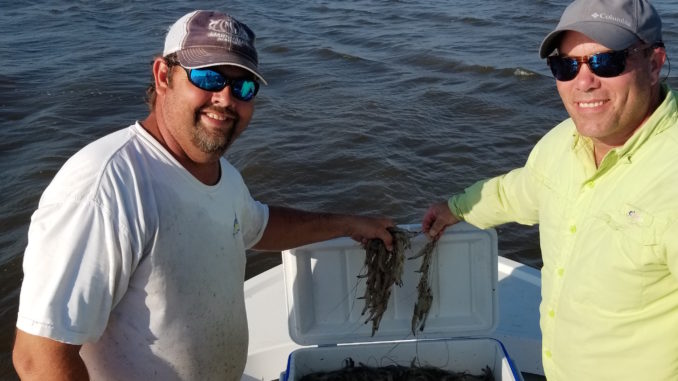
Recreational shrimp baiting season closes soon
With a couple of weeks left in South Carolina’s shrimp baiting season, many people are getting out on the water to fill their coolers. And by most accounts, they aren’t having any trouble.
Jamie Bateman of Sumter has had plenty of luck shrimping out of Edisto Island. He’s limited out on each trip, even though the area has been quite crowded.
When asked how close you can legally set your shrimp poles up to those of others, Bateman had some words of wisdom.
“I don’t get close enough to anyone else that I hinder their casting, and nobody has ever gotten that close to me, but it’s not uncommon to be fairly close. As long as you use common sense, it’s not a negative to have other shrimpers around you. The more bait in the water, the better it is for everyone,” he said.
Bateman has a number of favorite sites saved on his GPS/depthfinder, but he’s had to venture away from those when his areas were already taken by other shrimpers, but he said as long as he finds two things, he feels good about his chances.
“One thing I look for is muddy water. That’s what has always worked for me. If I’m trying a new spot, I just feel the bottom with one of my shrimp poles. You can tell if it’s hard or muddy. You can also do some scouting at low tide and find muddy areas, then set up on them once the tide covers them,” he said.
The other thing Bateman looks for is moving water.
“Incoming or outgoing tide is better than slack tide. Just remember that if you’re shrimping on the outgoing tide, you need to make sure your shrimp poles don’t get stuck high and dry before you get them out, and I’ve seen that happen to people. On the incoming, make sure the tide doesn’t completely cover your shrimp poles. I’ve seen that happen too,” he said.
For bait, Bateman mixes his own using fish meal and clay. He likes to get on the water with enough time to set his 10 poles, then make about 20 patties of bait.
“Some people like to make bait balls, but they can roll once in the water. I make them like hamburger patties. Once they hit the bottom, I think they sit pretty still,” he said.
Bateman drives by each pole, tossing a patty at each one. Once he’s tossed ten out, he makes his way back to the first pole and begins casting his net for shrimp. And when it comes to net size, he said bigger isn’t always better.
“It’s more important to have a net that you can consistently get to open completely than it is to have a giant net. If it’s so big that you can’t thrown it accurately and get it to open completely, then it’s no good. You’re much better with a smaller net that you are accurate with. Plus, the bigger the net is, the quicker you’re going to get exhausted throwing it,” he said.
Once he’s made casts at each pole, he goes back and does it again. Then, if he doesn’t already have a limit, he tosses another bait patty at the base of each pole, then goes back down the line throwing the net, continuing the process until he’s filled his cooler.
The 2017 shrimp baiting season closes Nov. 7.

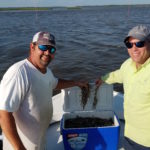
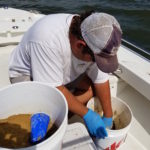
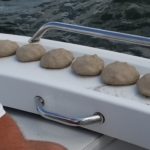
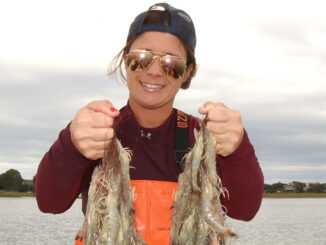

Be the first to comment